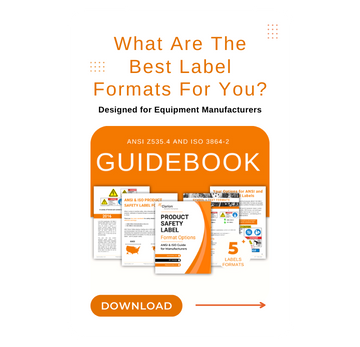How Arc Flash Explosion Accidents Happen
The National Electrical Code (NEC) broke new ground in 2000 when it began mandating the need to warn people performing maintenance on electrical panels about the hazards of arc flash and the subsequent need to wear very specific personal protective equipment (PPE). Examples include specialized gloves, clothing, and face shields.
The purpose of the NEC-mandated warning labels is to protect people from being killed by the incredible explosive energy released during an arc flash event - producing fire, pressure waves, intense light, and shrapnel. Arc flash events are electrical explosions due to a fault condition or short circuit when either a phase to ground or phase to a phase conductor are connected and current flows through the air. The temperature can get up to 35,000 degrees Fahrenheit which causes rapid heating of surrounding air and extreme pressures which cause the event.
These types of events often occur when maintenance workers are testing or repairing live equipment, the use of improper tools, corrosion of equipment, condensation or dust, or lack of electrical safety training can result in an incident. Many workers die each year as a result of arc flash explosion accidents – and most are killed because they weren’t wearing the proper PPE. The requirement for the new warnings was, and is, meant to help make sure such accidents are few and far between.
How Arc Flash Labels Were Developed
In 2000, just as the NEC arc flash labeling requirements were being finalized, Clarion Safety was selected by the electrical industry to assist in the development of sample designs that demonstrated each of the two types of labels under discussion. The first was a general warning meant to be placed on the equipment by the equipment’s manufacturer. The second was a more specific warning that would be developed as the result of an arc flash study performed after the equipment is installed. Clarion Safety's sample designs became the de facto state-of-the-art for the industry. And they still are.
To determine where the arc flash labels should be placed, we recommend that a risk assessment should be carried out beforehand to also determine what engineering controls can be put in place beforehand to reduce as much risk as possible. These assessments should only be carried out by someone familiar with IEEE 1584, NFPA 70E, and short circuit studies.
The Two Label System
As referred to above, the NEC labeling requirement actually creates the need for two different labels. The first is a general warning, installed by the equipment manufacturer, which communicates that an arc flash hazard is present. This label usually conveys a general hazard avoidance message that states something to the effect of, "Appropriate PPE is required when working on this equipment. Follow NFPA 70E requirements.” The reason this label is general in nature is that specific guidance for the exact PPE needed to avoid injury from an arc flash explosion cannot be defined until the equipment is actually installed and an arc flash study performed.
The second tier warning is a more detailed, best-practice safety marking which gives the reader very specific information. This label is created after an arc flash study has been performed on the installed equipment. If there is more than one piece of equipment, each arc flash label is unique, with serialized information relevant to each specific location appearing on each individual label. This type of label identifies the severity of the arc flash hazard, the explosive force distances involved, and the exact type of PPE required to best avoid possible injury as defined by NFPA 70E.
NFPA Arc Flash Boundaries
The NFPA has also developed approach boundaries to go along with training employees on arc flash safety while working with energized equipment. These boundaries engineers should determine and the layout for their equipment are as follows:
1. Prohibited Approach:
This is the innermost boundary that is a distance considered the same as making contact with a live part, although it varies by different pieces of equipment.
2. Restricted Approach:
This is an approach distance where there is an increased risk of shock.
3. Limited Approach:
A distance from the exposed live part where a shock hazard exists.
4. Flash Protection Boundary:
This is the outer boundary around an energy source where an employee would only be exposed to a curable second-degree burn, mainly from the heat generated from a flash.
Arc Flash Symbols
When it comes to the exact symbol to be used on your arc flash labels or stickers until recently there was not a single standardized graphic available to warn of this hazard. In the end of 2016, ISO adopted a symbol for the meaning of “To warn of an arc flash.” The newest arc flash symbol has been registered in ISO 7010 Graphical symbols – Safety colours and safety signs – Registered safety signs and is considered “best practice” from an ISO design perspective.
Through our leadership in ANSI and ISO, Clarion Safety is pleased to have been a part of this change which will help to promote a global understanding of the potential for arc flash hazards – to better reduce risk and protect people. In line with our commitment to providing the very best in visual safety communication, our standard arc flash label designs align with ISO 7010; Clarion Safety symbol number I6643 (as shown below) replaces past symbols used for arc flash. Our arc flash labels are compliant with ISO 7010, as well as ANSI Z535, NFPA 70E, and NEC.

Comparison of Past Arc Flash Single-Symbol Labels and Current Combined Symbol Label
Arc Flash Studies
Clarion Safety is aware of several highly qualified product safety and product liability prevention-focused firms who specialize in performing arc flash studies. See our resources page for their contact information.
